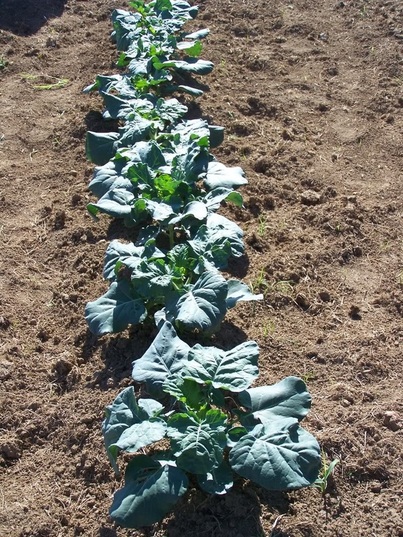Growing Organic Broccoli Made Easy!

WHEN TO PLANT
Broccoli is a cool weather vegetable and grows best at temperatures between 60-65F. Seeds can be sown directly into your garden up to 2 months before your last frost date if protected from cold temperatures with row covers.
Once daytime temperatures have reached a steady 60F or warmer, consecutive plantings can be direct seeded into your garden up until summer. To avoid crop damage from severe temperature fluctuations, we recommend starting your first planting indoors 5-6 weeks before your last frost date.
For a fall harvest, plant seeds directly into your garden up through early summer or up until temperatures reach a steady 75F and above.
WHERE TO PLANT
Broccoli likes full sun in the spring. When planting in early summer for a fall crop, find a place that provides some afternoon shade such as behind corn, or another tall crop; artificial shade can also be used.
A thick cover of mulch can also help keep your soil cool. These measures will help your broccoli not to bolt, or rice. "Bolting" means going to seed.
PREPARING THE SOIL
Broccoli is a heavy user of nitrogen. In the fall, work into your soil generous amounts of organic matter (such as autumn leaves) and manure.
The pH level for growing a healthy broccoli crop needs to be around 7.0. Using lime will help to raise the pH levels if they are low.
SEEDS AND GERMINATION
Your broccoli seeds will germinate best at temperatures 60-70. Broccoli needs approximately 4 to 5 days to germination, and the seeds should be good up to 3 years.
GETTING STARTED INDOORS (transplanting)
Start growing broccoli seeds indoors 5-6 weeks before your last frost date. While indoors you will need to transplant seedlings one time to a larger pot or flat before transplanting to the garden.
Harden off one full week before planting in the garden. Transplanting broccoli when they are the proper size is critical for preventing premature heading. Transplant when seedlings are 6″ tall and have 2-4 leaves.
PLANTING AND GROWING BROCCOLI IN YOUR GARDEN
Space rows 24” apart and place plants in rows 18-24” apart. Plant broccoli 1” deeper in the garden than what they were in the pot or flat.
An extended cold spell of 50-60F days and 30F nights can affect your crop by producing small, underdeveloped heads called ‘buttons’. Use row covers if needed
Monthly supplements of compost tea and fish emulsion, along with a foliar spray will help to feed your nutrient hungry broccoli.
WATERING
Presoak the soil before planting indoors or outdoors. Broccoli needs about 1” of water a week. Adjust for more in arid areas.
COMPANION PLANTING & ROTATION
Plant broccoli away from where brassica was growing the previous year; this will discourage brassica pests from proliferating.
WHEN TO HARVEST
As the weather warms past 75F watch your broccoli carefully. You'll want to be diligent to harvest before the head blooms.
With a sharp knife, cut stem at the point where the top branches begin. After the harvest you should have a secondary harvest of small florets growing up from the stem.
STORAGE
Broccoli will last up to 2 weeks in the refrigerator.
Freezing is the best method for preserving it’s natural flavor and color; other methods include pickling or preserving in oil.
COMMON PESTS AND PROBLEMS
Overhead watering will help detach insects from the plant.
Controlling nitrogen levels keep the aphid numbers down; high levels of nitrogen have been shown to increase aphid population.
Using compost or straw mulches will significantly reduce the amount of fly larvae hatched directly into the soil, and floating row covers used as soon as the plant emerges, or right after transplanting will also prevent larvae hatchings.
Clubroot (a fungus that attacks the roots) can be controlled by keeping soil pH at 7.2.
Rotating your crop every year (planting in a different location than the previous year) will also help to eliminate pest and disease issues.
